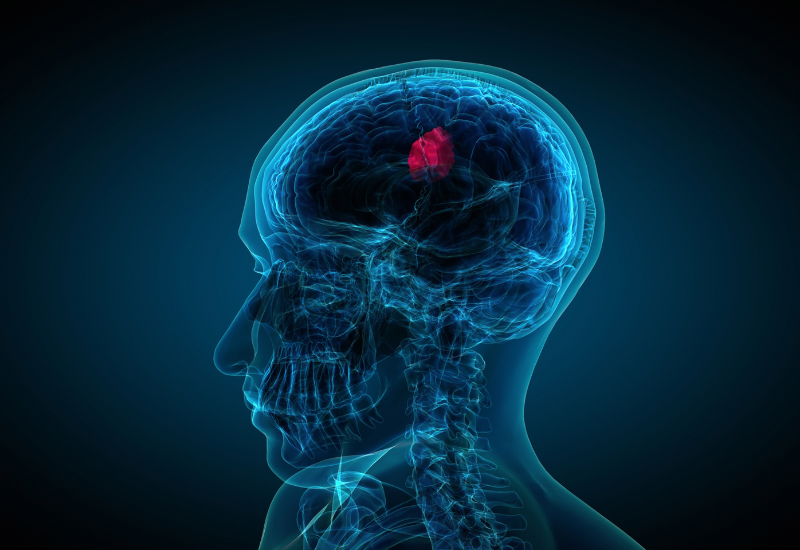Brain Haemorrhage & Stroke

Our Services
Let's Get In Touch

What We Need To Know About Stroke
The brain truly is a wonder! It’s an incredibly complex organ, responsible for everything from basic survival functions to complex thoughts, emotions, and creativity. It processes information, coordinates movement, and enables communication. With around 86 billion neurons, each connecting to thousands of others, its networking is mind-boggling! Plus, it’s adaptable, constantly changing and learning throughout our lives—a phenomenon known as neuroplasticity.
The brain’s ability to manage multiple functions simultaneously while maintaining intricate connections is truly remarkable. Different regions of the brain specialize in various tasks—like the occipital lobe for vision, the temporal lobe for hearing and memory, and the frontal lobe for decision-making and planning.
Yet, these areas don’t work in isolation. For instance, when you recognize a face, several parts of the brain collaborate: the visual cortex processes the image, the temporal lobe identifies the person, and the limbic system adds emotional context. This interconnectedness allows for complex behaviours and responses, making the brain incredibly versatile.
The way it can adapt and reorganize itself in response to learning or injury adds another layer to its wonder.
Indeed, the brain’s demand for blood supply is fascinating! The brain, although it only makes up about 2% of body weight, consumes roughly 20% of the body’s energy. This high metabolic rate is due to the brain’s constant activity in processing information, maintaining homeostasis, and supporting cognitive functions.
The brain is supplied with blood through a complex network of arteries, primarily the internal carotid and vertebral arteries. These vessels ensure a continuous supply of oxygen and nutrients, essential for neuronal health and function. The blood-brain barrier adds another layer of protection, regulating what substances can enter the brain from the bloodstream, helping to maintain a stable environment for neural activity.
Additionally, the brain has its own mechanisms for adjusting blood flow based on its activity levels—regions that are more active receive more blood. This ability to regulate its own blood supply highlights the brain’s sophisticated needs and its intricate connection to the circulatory system.
It is indeed tragic how disorders related to blood supply can lead to conditions like strokes and brain hemorrhages. These events can have devastating consequences because they disrupt the brain’s access to oxygen and nutrients, leading to cell death and loss of function.
A stroke occurs when blood flow to a part of the brain is interrupted, which can be due to a blockage (ischemic stroke) or a burst blood vessel (hemorrhagic stroke). Both types can result in varying degrees of impairment, affecting movement, speech, memory, and overall quality of life.
Brain haemorrhages, on the other hand, involve bleeding in or around the brain, which can increase pressure on brain tissue and cause further damage. The impact of these conditions highlights the critical importance of timely medical intervention and rehabilitation.
Advancements in medical research and treatment options continue to improve outcomes for those affected, but prevention—through managing risk factors like hypertension, diabetes, and lifestyle choices—remains crucial. It’s a poignant reminder of how vital our blood supply is to brain health.
Recognizing the symptoms of a stroke or brain haemorrhage is crucial for timely intervention. Here are the key symptoms associated with each:
Stroke Symptoms (often remembered by the acronym FAST):
- Face drooping: One side of the face may droop or feel numb. Ask the person to smile; if it’s uneven, it’s a warning sign.
- Arm weakness: One arm may be weak or numb. Ask the person to raise both arms; if one drifts downward, it’s concerning.
- Speech difficulty: Speech may be slurred, or the person may have trouble speaking or understanding. Ask them to repeat a simple phrase.
- Time to call emergency services: If any of these signs are present, seek immediate medical attention.
Other symptoms may include sudden confusion, trouble seeing in one or both eyes, and sudden severe headache with no known cause.
Brain Haemorrhage Symptoms:
- Sudden severe headache: Often described as a “thunderclap” headache, it can be intense and sudden.
- Nausea or vomiting: Accompanied by headaches or other neurological symptoms.
- Loss of consciousness or altered consciousness: This can vary from fainting to confusion or drowsiness.
- Neurological deficits: Similar to stroke symptoms, such as weakness, numbness, or difficulty speaking.
If you or someone else experiences these symptoms, seeking immediate medical help can be life-saving. Awareness and quick action are key in these situations.
The investigation and treatment of stroke and brain haemorrhage are intricate processes that require a combination of art and science. Here’s a deeper look at the nuanced approaches involved:
Art of Investigation
- Clinical Judgment:
- Physicians rely on their experience and intuition when interpreting symptoms and deciding on immediate interventions. Understanding subtle signs can make a significant difference in diagnosis.
- Patient-Centric Approach:
- Engaging with patients and their families to gather a comprehensive history is crucial. This includes understanding their medical history, lifestyle, and personal experiences of symptoms, which can guide investigations.
- Diagnostic Imaging:
- Selecting the right imaging technique is both a science and an art. For instance, knowing when to use a CT scan versus an MRI can depend on the clinical context and urgency. Interpreting these images requires a keen eye for detail.
- Multidisciplinary Collaboration:
- Effective investigation often involves a team approach, incorporating neurologists, radiologists, and other specialists who can provide diverse perspectives and insights.
Art of Treatment
- Tailored Interventions:
- Treatment plans are often customized based on individual patient factors, including the type of stroke, location of the blockage or bleed, and the patient’s overall health and preferences.
- Balancing Risks and Benefits:
- Clinicians must artfully navigate the risks associated with treatments (like thrombolysis) against potential benefits. This involves thorough discussions with patients and families about goals of care and potential outcomes.
- Surgical Techniques:
- In cases of hemorrhagic stroke, the surgical art comes into play—surgeons must possess not only technical skills but also the ability to make quick decisions under pressure, often in high-stakes environments.
- Rehabilitation Planning:
- The recovery process requires a holistic view, integrating physical, emotional, and social needs. Rehabilitation teams use their skills to motivate and support patients through recovery, adapting strategies to individual progress.
- Continuous Learning and Adaptation:
- The field is constantly evolving, with new research and technologies emerging. Clinicians must stay informed and be flexible, adapting their approaches based on the latest evidence and individual patient responses.
Conclusion
The investigation and treatment of stroke and brain haemorrhage require a blend of scientific rigor and compassionate, personalized care. The ability to think critically, communicate effectively, and act decisively is essential in navigating these complex situations.
| Risk Factors | Details |
|---|---|
| Modifiable Risk Factors | |
| High Blood Pressure | The leading risk factor for stroke; managing it can significantly reduce stroke risk. |
| Diabetes | Poorly controlled diabetes increases stroke risk due to vascular damage. |
| High Cholesterol | Elevated cholesterol levels can lead to atherosclerosis and increased stroke risk. |
| Smoking | Damages blood vessels and promotes clot formation, significantly increasing stroke risk. |
| Excessive Alcohol Intake | Heavy drinking can raise blood pressure and increase stroke risk, while moderate consumption can also pose risks for certain individuals. |
| Obesity | Increases the likelihood of hypertension, diabetes, and other cardiovascular diseases, all of which raise stroke risk. |
| Physical Inactivity | Lack of exercise contributes to obesity, high blood pressure, and diabetes, all of which are stroke risk factors. |
| Poor Diet | Diets high in saturated fats, trans fats, and sodium can contribute to hypertension and other cardiovascular issues. |
| Atrial Fibrillation | A common heart rhythm disorder that can lead to clot formation, increasing stroke risk. |
| Stress | Chronic stress can lead to unhealthy behaviors (e.g., smoking, poor diet) and may also increase blood pressure. |
| Non-Modifiable Risk Factors | |
| Age | The risk of stroke increases with age, especially after age 55. |
| Gender | Men generally have a higher risk of stroke at a younger age, while women have a higher lifetime risk, particularly post-menopause. |
| Family History | A family history of stroke or cardiovascular diseases increases an individual’s risk. |
| Ethnicity | Certain ethnic groups (e.g., African Americans, Hispanics) have a higher risk of stroke due to a combination of genetic and environmental factors. |
| Previous Stroke or Transient Ischemic Attack (TIA) | A history of stroke or TIA significantly increases the risk of future strokes. |

